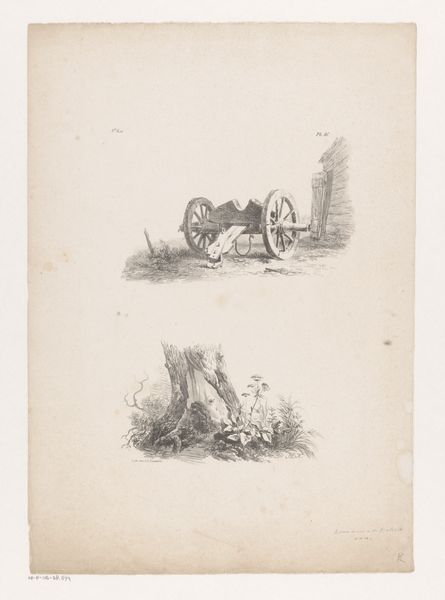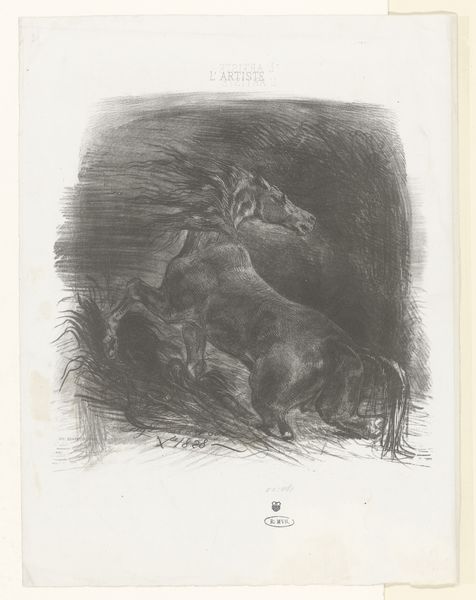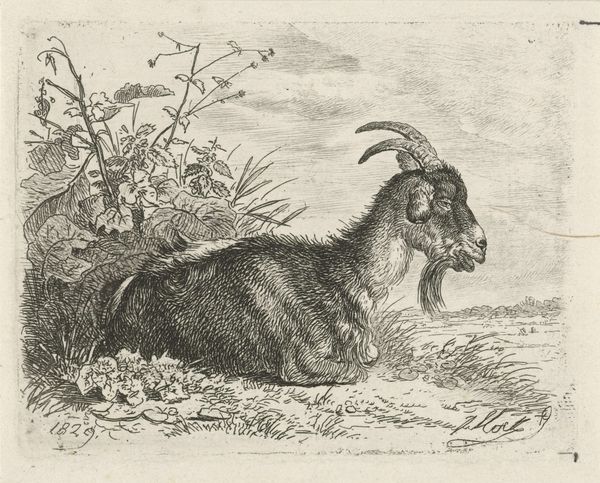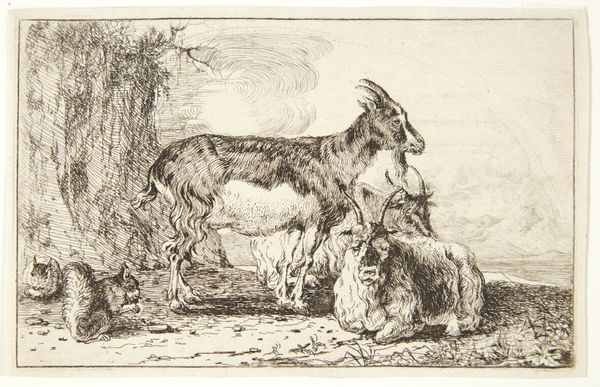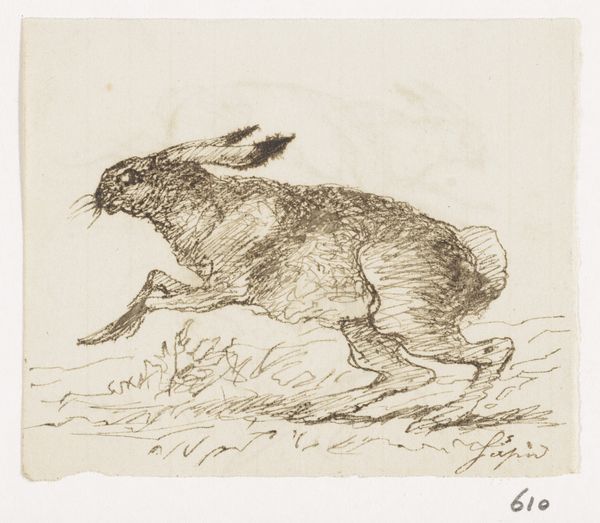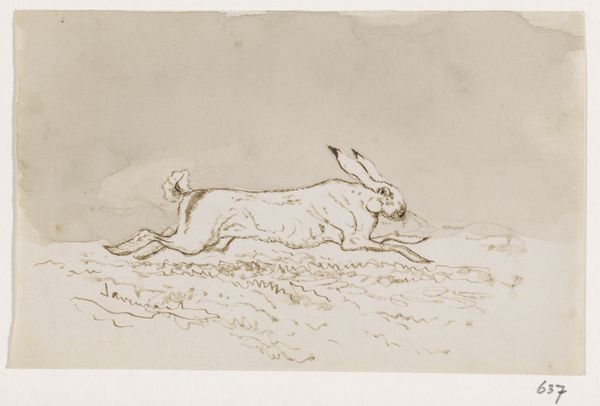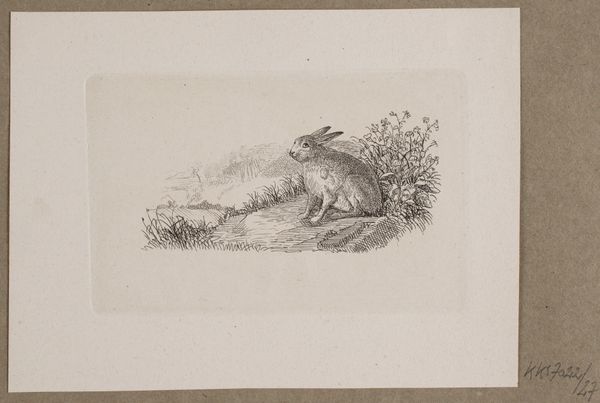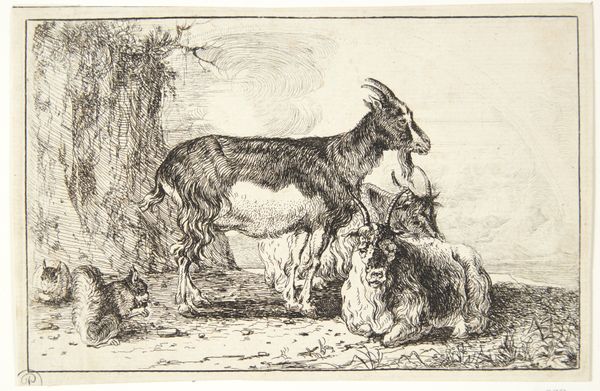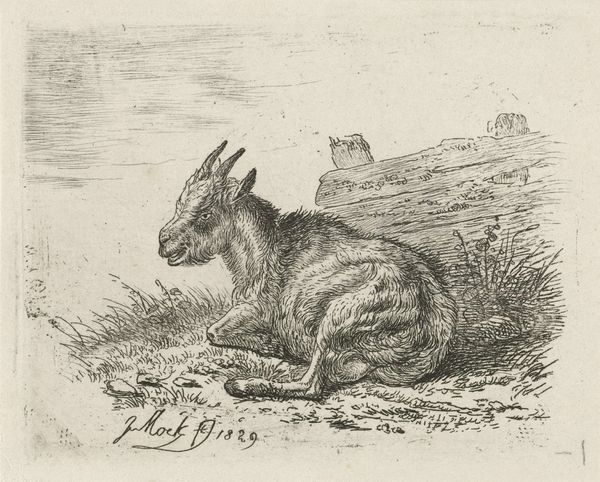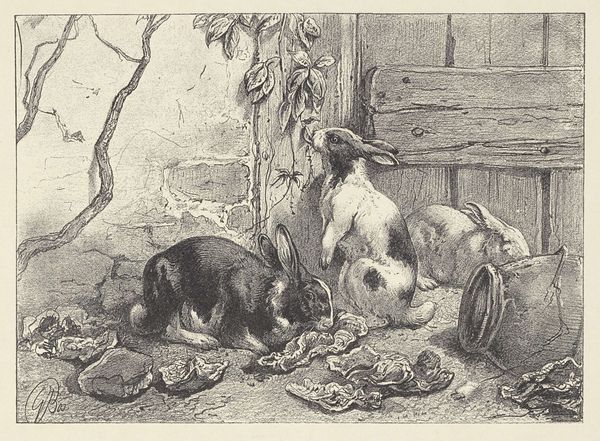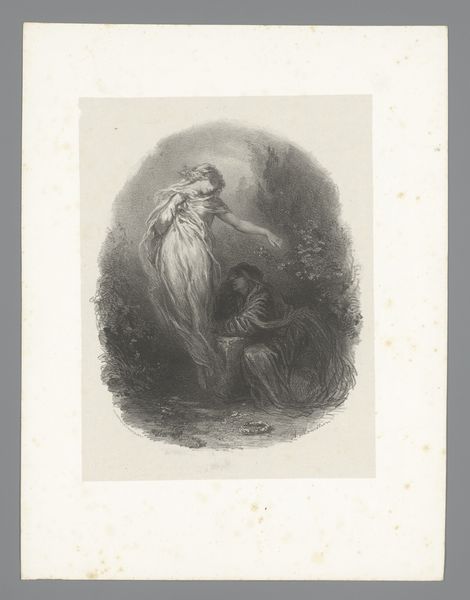
Dimensions: plate: 26.8 x 20.2 cm (10 9/16 x 7 15/16 in.) sheet: 32 x 24.9 cm (12 5/8 x 9 13/16 in.)
Copyright: National Gallery of Art: CC0 1.0
Editor: Here we have Adam von Bartsch's "Goat in a Landscape," created around 1805. It's an engraving and has this old, slightly faded look that's kind of charming. What strikes me is how detailed the goat is compared to its surroundings. How would you interpret this work? Curator: As a materialist, I find myself immediately drawn to the process. Look at the technique of engraving. The artist painstakingly carved into the metal to produce these fine lines. Think about the labor involved, the time spent creating this image, and the class structure that supported such artistic production in 1805. The material reality is that this print would have been accessible to a broader audience than, say, an oil painting, democratizing the image, wouldn't you say? Editor: I hadn't really thought about the socio-economic aspects of printmaking itself. It's true, an engraving would have been much more accessible! So, the choice of medium affects who gets to view and consume the art. Curator: Precisely! The availability of printed images was transforming visual culture. Now, consider the image itself: a goat in a rather idyllic landscape. Is it celebrating the rural, or is it making a subtle comment on the nature of work, animal labor even? What are your thoughts about its setting and if it's related to labor and making? Editor: It does seem to hint at a specific sort of animal husbandry, perhaps an idealized view of rural life? There's almost no human element shown though. Curator: Exactly! Perhaps the focus on the solitary goat invites us to consider its relationship to the natural world, not just human society. But by engaging with it in a particular class, and method, we still can not dissociate from labor and means of production. Editor: That is fascinating! Looking at the artwork in that way has completely shifted my perspective. It is all interconnected: subject matter, medium and socioeconomic conditions! Curator: Indeed! And considering these elements collectively provides a richer understanding of not only this particular artwork, but the artistic practices of the era.
Comments
No comments
Be the first to comment and join the conversation on the ultimate creative platform.
